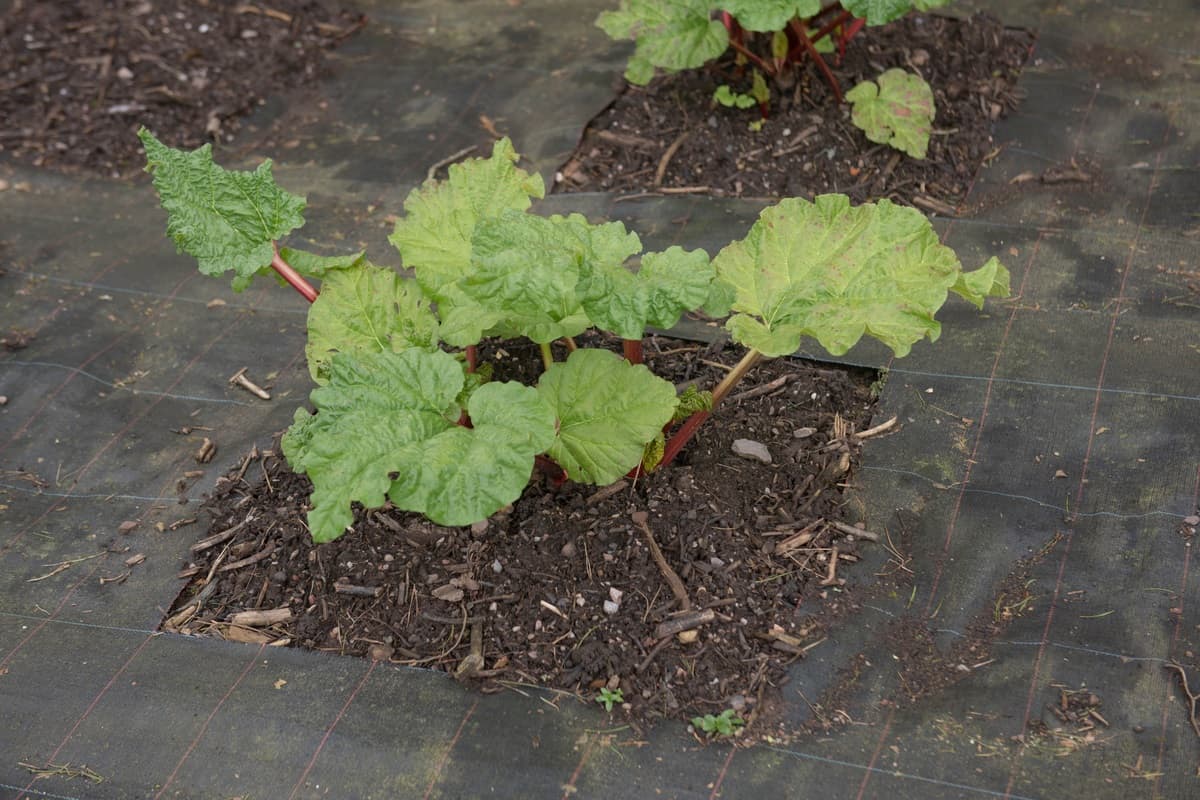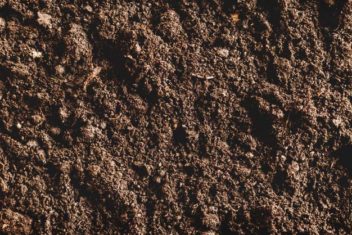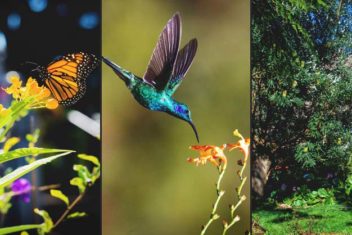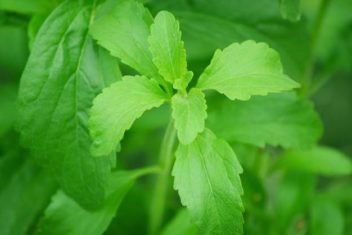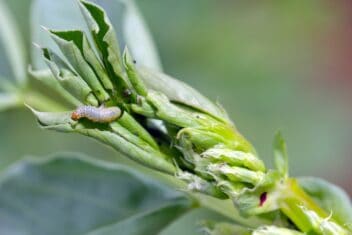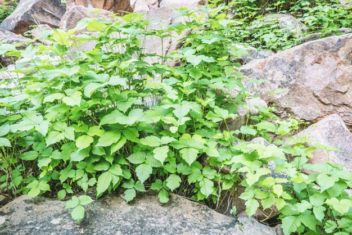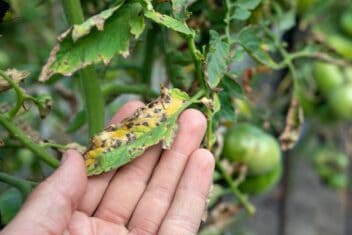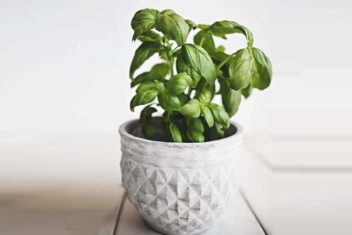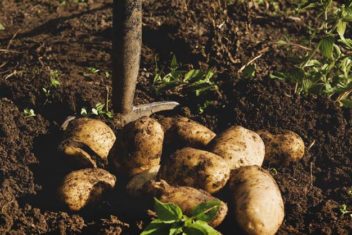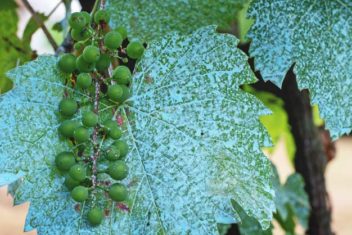I’ll never forget the first time I installed a flower bed at my new house.
We had just purchased the property the fall before, and once the weather warmed up in the spring, I was chomping at the bit to start growing flowers in my front lawn.
I was told that putting down landscaping fabric would be the best course of action to prevent weeds from forming around my freshly planted flowers, so I picked up a few rolls at the garden center. I diligently applied the fabric, planted my flowers, and assumed I would never have to weed again.
Boy, was I wrong! Landscape fabric can help prevent weeds from forming in some cases, but in my situation, it was a huge pain in the you-know-what. Flash forward into the future, and I rarely use this material in my garden now.
Although landscape fabric wasn’t right for me, there are some situations in which using it around your plants might make sense.
Here’s what you need to know.
What is Landscape Fabric?
First, let’s address the question of what landscape fabric is.
This is material that goes by many names, including landscaping fabric, landscape fabric, weed barrier fabric, weed block, and many more.
It’s often touted as the solution to getting rid of weeds, but that isn’t entirely true. It has its fair share of pros and cons and while it does work well in certain situations, that isn’t always the case.
Landscape fabric can be made out of a variety of materials, but typically, these include recycled plastic, polyester, or linen. It consists of a woven cloth that is installed in garden beds of any shape or size.
Benefits of Landscape Fabric

If you’re considering whether landscape fabric might be right for your garden, consider these main advantages.
1. Keeps Mulch and Hardscaping Materials in Place
One of the most common reasons why people turn to landscape fabric is that it can keep mulch and other hardscaping materials in place.
If you’re using an inorganic mulch, like rocks, you may find that these begin to sink into the soil over time. This means you’ll have to keep reapplying mulch to get the same overall look, which can be costly and time-consuming.
Landscaping fabric prevents this, allowing you to apply mulch just once and be done with it. This is helpful in particular for inorganic mulches, which are costly to continue reapplying.
2. Prevents Weeds (Mostly)
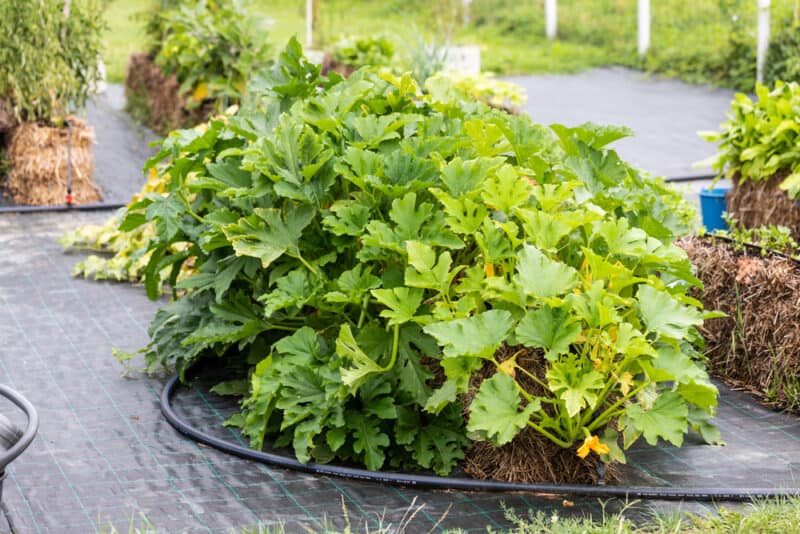
Another benefit of using landscaping fabric is that it can help to prevent weed seeds from germinating. It covers the soil and serves as a barrier, making it difficult for seeds to get the bed they need to germinate.
Of course, this also means that you can’t plant directly into landscaping fabric, either. You’ll need to cut a hole or install the fabric around the perimeter to make sure the seeds you want to germinate can do so.
Landscaping fabric prevents weeds from forming in one other way. It is difficult for seeds to get under the fabric to germinate, and it’s also challenging for sunlight to reach the seeds once they’re there, too.
3. Reduces the Need for Chemicals
Because landscaping fabric can prevent weed seeds from germinating, it can reduce your overall reliance on herbicides. There aren’t any weeds popping up – so you won’t need to apply any chemicals to get rid of them.
Since you aren’t relying on chemicals, landscaping fabric is a much more eco-friendly solution to your weed problems.
4. Great for Slopes

Another great reason to consider using landscaping fabric? It’s great for slopes.
Gardeners often struggle planting on slopes because of the increased likelihood of erosion. It’s hard to keep roots, seeds, and mulches in place.
Landscaping fabric can help since it prevents soil from being washed away every time it rains or you irrigate the garden. It also provides a better anchor to keep mulch where it needs to be.
5. Retains Moisture
Since the landscaping fabric is holding in soil, it is also holding in moisture. This is beneficial if you have sandy soil that leaches water and nutrients easily. Its tiny holes let the water reach plant roots without causing it to drain away too rapidly.
It also helps to reduce surface evaporation, so you will likely find that you don’t need to water the garden as often.
6. Lasts Many Years
You won’t have to replace landscaping fabric very often. It lasts for years so you don’t have to buy herbicides or reapply chemicals each year.
What to Keep in Mind When Using Landscape Fabric
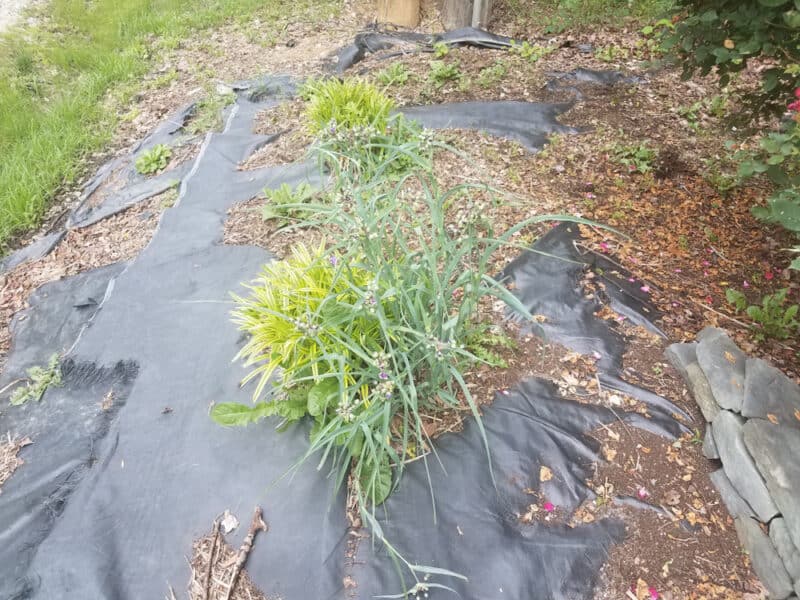
Here are some of the biggest disadvantages of using landscaping fabric in the garden. None of them are exactly dealbreakers, but they’re important to keep in mind as you plan your plot.
1. Doesn’t Keep All Weeds Out
Unfortunately, this isn’t a perfect system. Weed seeds are opportunistic little devils, and plant roots can almost always grow through the cloth if they’re stubborn enough.
Plus, every time you cut a hole into the weed barrier to plant the seeds or seedlings you want to grow there, you’re creating a new entry point for weed seeds to enter and proliferate.
2. Can Get Clogged
Over time, both soil and decomposing mulch can clog the tiny perforations in the landscaping fabric. This can prevent water, air, and nutrients from reaching the roots of your plants. You may find that the health of your plants slowly begins to decline over time.
3. Doesn’t Help Earthworms
Another issue with using landscaping fabric is that it doesn’t allow earthworms to move among the roots of your plants. Without earthworms aerating the soil, it can become compacted and devoid of nutrients.
It isn’t just earthworms whose movements will be impeded, either. Insects and beneficial fungi alike will have a harder time moving through the soil layers.
4. Can Degrade Soil Structure
Earthworms aside, landscaping fabric can be damaging to the soil in another way. Since it’s harder for organic matter to biodegrade in the soil, over time, the soil will become unhealthy. Organic mulches, whether they’re shredded leaves or wood chips, can’t fully reach the soil to impart their full benefit, either.
5. Time Consuming and Costly to Install
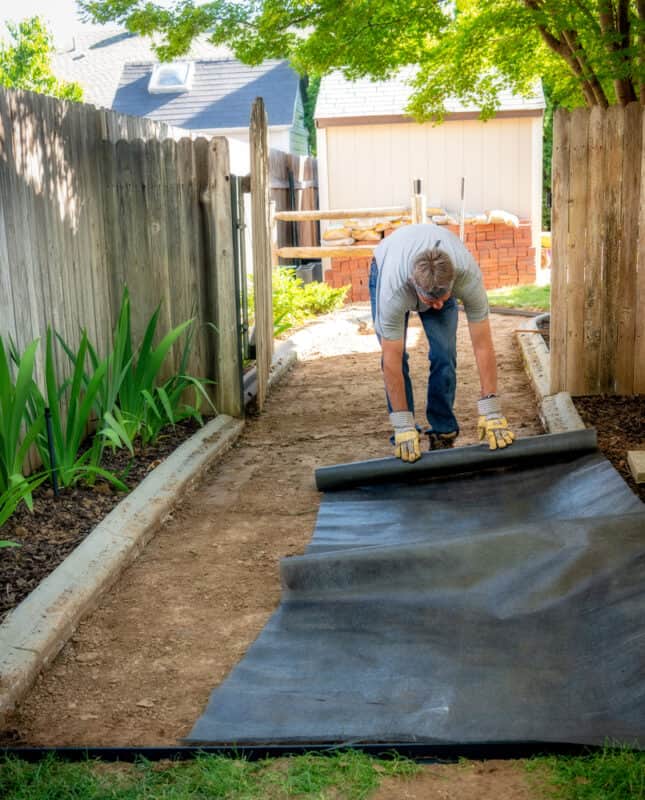
Although you don’t have to apply it as often as you might have to apply something like organic mulch, landscaping fabric is still time-consuming and costly to install.
The latter point is especially true when you recognize that many types of organic mulch, like straw or wood shavings, are 100% free to use.
6. Not Very Flexible
Finally, know that landscaping fabric isn’t the most flexible solution you might consider in your garden. Each time you dig a hole to plant, the fabric will become less effective.
You might think that the solution to that problem is to just dig as small a hole as possible. Although that works, landscaping fabric isn’t very pliable and you may find that you need to dig a bigger hole just to give yourself room to work with your plants.
Should I Use Landscaping Fabric in My Garden?
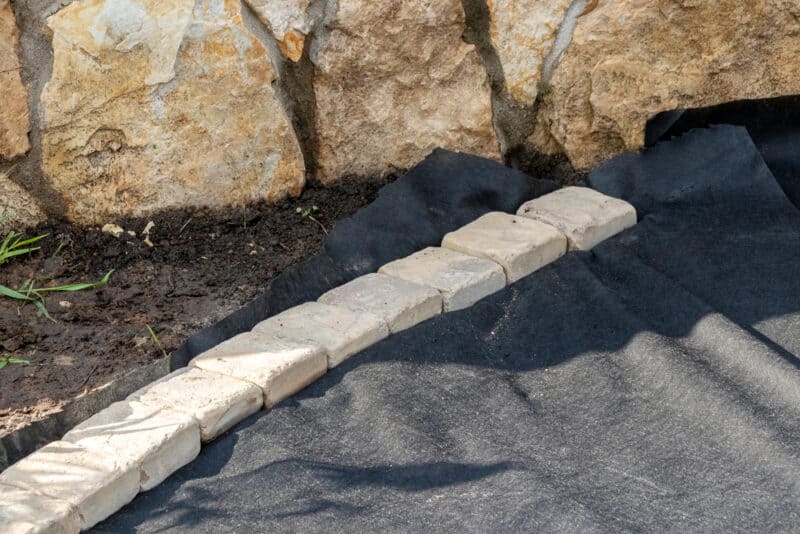
As is the case with most gardening solutions that are touted as the panacea to all that ails you, landscaping fabric has its fair share of pros and cons. While it might not be the perfect fit for every situation, it can be helpful in many.
If you’re looking for short-term weed protection, landscaping fabric can be helpful. The weeds will resurface eventually but the fabric can give you a bit of a break.
That said, you shouldn’t plan on using this material for the long term. It can inhibit earthworm populations, leading to soil that isn’t as healthy as it should be. Over time, this can affect the health of your plants.
The short answer to the question of whether you should use this material in your garden – feel free to do so, but don’t rely on it as a permanent, long-term solution (for more than a year or so).
Instead, use it around ornamental annuals, particularly where plants will only be grown for a short period and other weed prevention solutions won’t work (like around a mailbox or pathway).
Remember – a little bit goes a long way!
